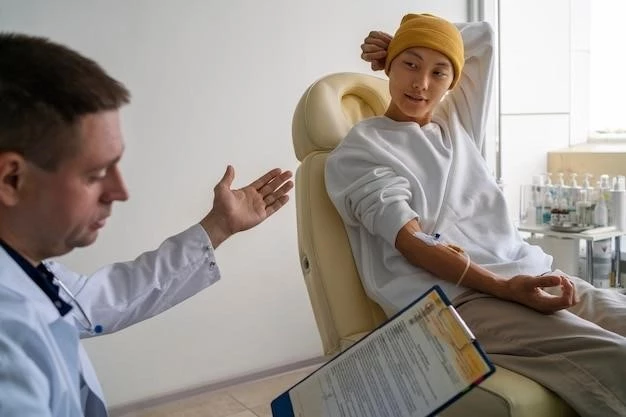Introduction
Pilotto syndrome is a rare genetic multiple developmental anomalies syndrome characterized by craniofacial anomalies, congenital heart defects, and intellectual disability.
Overview of Pilotto Syndrome
Pilotto Syndrome, also known as Cleft Lip and Palate, Congenital Heart Disease, Scoliosis, Short Stature, and Intellectual Disability, is a rare genetic multiple developmental anomalies syndrome that affects the face, heart, and back. It is characterized by craniofacial anomalies, congenital heart defects, and intellectual disability. Symptoms may include short head, cleft lip, cleft palate, short stature, mental retardation, scoliosis, and more. Research is ongoing to understand this rare syndrome better.

Symptoms and Characteristics
Cleft lip, cleft palate, short stature, mental retardation, scoliosis, heart defects, asymmetrical facial features, large ear, short neck, and more may be present in individuals with Pilotto syndrome.
Common Signs and Symptoms
Clinical manifestations of Pilotto Syndrome may include short head, cleft lip, cleft palate, short stature, mental retardation, scoliosis, large ear, low set ear, asymmetrical facial features, and congenital heart defects, among other associated features.
Diagnosis and Treatment
Diagnosis of Pilotto Syndrome may involve genetic testing, imaging studies, and clinical evaluation. Treatment focuses on managing symptoms through a multidisciplinary approach tailored to the individual’s needs.
Diagnostic Procedures
Diagnostic procedures for Pilotto Syndrome may involve genetic testing, clinical evaluation of characteristic physical features, imaging studies such as X-rays and echocardiograms to assess heart defects, and consultation with various specialists to confirm the diagnosis.
Treatment Options
Treatment for Pilotto Syndrome is tailored to manage symptoms such as craniofacial anomalies, congenital heart defects, and intellectual disability through a multidisciplinary approach involving specialists like cardiologists, geneticists, orthopedic surgeons, and therapists. Interventions may include surgeries to correct physical abnormalities, educational support for intellectual disability, and ongoing medical monitoring to address the individual’s needs.
Genetics and Causes
Pilotto Syndrome is a rare genetic multiple developmental anomalies syndrome linked to craniofacial anomalies, congenital heart defects, and intellectual disability.
Genetic Basis of Pilotto Syndrome
Pilotto Syndrome is a rare genetic multiple developmental anomalies syndrome that is characterized by craniofacial anomalies, such as microcephaly, brachycephaly, craniosynostosis, and facial asymmetry, along with congenital heart defects, intellectual disability, and other associated features.
Impact on Patients
Cleft lip, cleft palate, short stature, mental retardation, scoliosis, heart defects, asymmetrical facial features, large ear, and more can significantly impact individuals with Pilotto Syndrome.
Effect on Daily Life
Pilotto Syndrome’s diverse symptoms, including craniofacial anomalies and intellectual disability, can significantly impact daily life, affecting relationships, self-esteem, physical abilities, educational opportunities, and access to specialized care and support services.
Research and Studies
Research on Pilotto Syndrome has focused on understanding the genetic basis, clinical manifestations, treatment approaches, and impact on affected individuals. Studies aim to improve diagnosis, management, and overall outcomes related to this rare genetic syndrome.
Current Research Findings
Research on Pilotto Syndrome focuses on understanding its genetic basis, clinical manifestations, and treatment options. Studies aim to improve diagnosis, management, and overall outcomes for individuals affected by this rare genetic multiple developmental anomalies syndrome.

Support and Resources
Community groups for Pilotto Syndrome offer support and information to patients and families, aiding in managing the impacts of this rare genetic multiple developmental anomalies syndrome.
Community Groups and Advocacy Organizations
Community groups for Pilotto Syndrome provide essential support and information to individuals and families affected by this rare genetic multiple developmental anomalies syndrome. These organizations play a crucial role in assisting individuals in navigating the challenges associated with the condition, offering emotional support, practical resources, and a sense of community.
Prognosis and Management
The long-term outlook for patients with Pilotto Syndrome varies based on the severity of symptoms and the individual’s response to treatment. Management typically involves a multidisciplinary approach aimed at addressing the specific needs and challenges associated with this rare genetic syndrome.
Long-Term Outlook for Patients
The long-term prognosis for individuals with Pilotto Syndrome varies depending on the severity of symptoms and response to treatment. Management strategies involving a multidisciplinary approach are vital in addressing the challenges associated with this rare genetic syndrome and improving the overall quality of life for affected individuals.
Clinical Trials and Specialists
Specialists knowledgeable about Pilotto Syndrome may include clinicians, geneticists, orthopedic surgeons, and therapists involved in ongoing research studies, clinical trials, and patient care for this rare genetic syndrome.
Experts in Pilotto Syndrome
Healthcare professionals well-versed in Pilotto Syndrome include clinicians, geneticists, orthopedic surgeons, and therapists actively involved in research, clinical trials, and patient care specific to this rare genetic multiple developmental anomalies syndrome.
Complications and Associated Conditions
Pilotto Syndrome may lead to complications such as cleft lip, cleft palate, congenital heart disease, scoliosis, short stature, and mental retardation as associated conditions.
Common Complications
Complications associated with Pilotto Syndrome include cleft lip, cleft palate, congenital heart disease, scoliosis, short stature, mental retardation, asymmetrical facial features, and more. These conditions can impact various aspects of an individual’s health and well-being.
Prevention and Early Detection
Early detection of symptoms like cleft lip, cleft palate, congenital heart disease, scoliosis, short stature, and mental retardation is crucial for timely management and intervention for individuals with Pilotto Syndrome.
Strategies for Prevention
Early detection of symptoms like cleft lip, cleft palate, congenital heart disease, scoliosis, short stature, and mental retardation in individuals with Pilotto Syndrome is key to implementing timely management strategies and potential interventions to address the condition effectively.
Global Awareness and Education
Campaigns and initiatives aimed at increasing awareness and education about Pilotto Syndrome can help improve early detection, access to resources, and support for individuals and families affected by this rare genetic multiple developmental anomalies syndrome.
Campaigns and Initiatives
Various campaigns and initiatives aim to raise global awareness about Pilotto Syndrome and enhance education on the condition. These efforts seek to improve early detection, access to resources, and support for individuals and families affected by this rare genetic multiple developmental anomalies syndrome.
In summary, Pilotto Syndrome is a rare genetic multiple developmental anomalies syndrome characterized by craniofacial anomalies, congenital heart defects, and intellectual disability.
Summary of Pilotto Syndrome
Pilotto Syndrome is a rare genetic multiple developmental anomalies syndrome characterized by craniofacial anomalies (such as microcephaly and facial asymmetry), cleft lip and palate, congenital heart defects, intellectual disability, scoliosis, short stature, and hypogenitalism or hypogonadism. This syndrome requires a multidisciplinary approach for management and intervention to address the diverse symptoms and associated conditions effectively.
